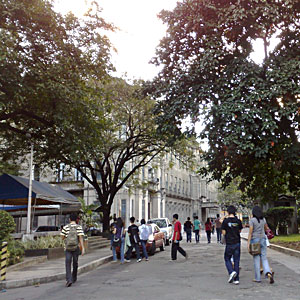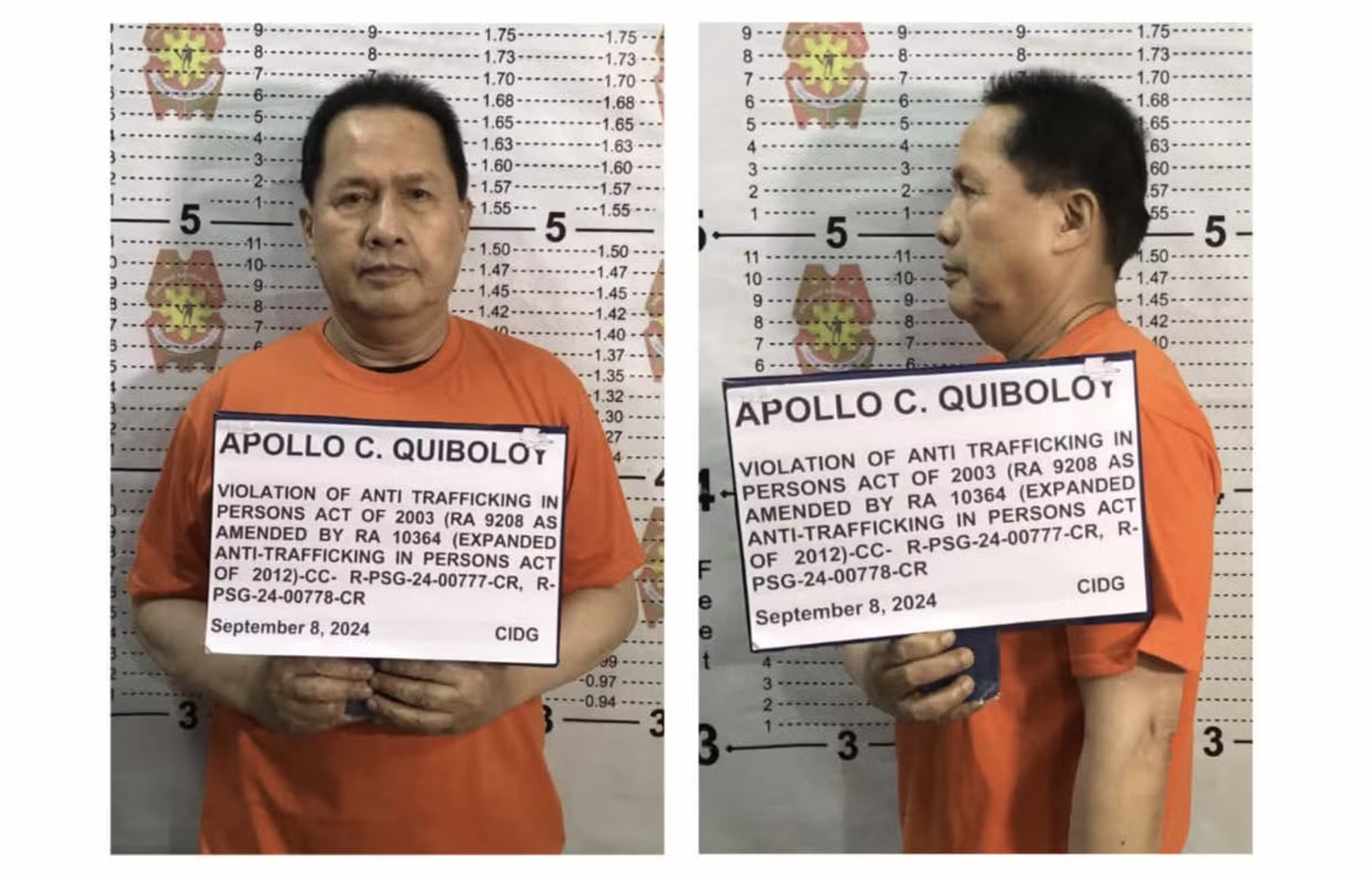Most of our growing-up years are spent in school. Teachers are considered the most trustworthy people after our parents, and the school is considered the second safest place after home.
Does your school live up to this standard? Are you safe in your second home?
Security in and out of school
 In a sense, going to school is a child’s first experience at being left alone. It is important that schools are kept safe because they serve as a transition where a person could learn how to survive in a strange world safely — like a bike with training wheels.
In a sense, going to school is a child’s first experience at being left alone. It is important that schools are kept safe because they serve as a transition where a person could learn how to survive in a strange world safely — like a bike with training wheels.
Rico de Guzman of the Campus Security Management Association of the Philippines (CSMAP) says, “What is being protected (in school security), more than anything else, is the formation of the human character through education.”
A student is always advised to be on his guard only after he steps out of the campus — don’t talk to strangers, don’t go anywhere alone, go straight home after school — but not one word is said about being cautious inside school premises. That’s because it is supposed to be a safe place — safe spaces defined by safe walls. It is rightly expected to be this way and it should be this way—in any school, at any given time and day.
It must be made clear, though, that school grounds extend beyond school property lines. Schools must also offer safety at least around the vicinity. School security can’t stop at the gate. School security should also cover the safe passage of students from home to school and back home.
Don’t stack the paper beside the candle
School security starts with location. “We don’t select school sites that are prone to hazards—natural or man-made,” says Candelaria de Juan, Education Program Specialist at the Department of Education’s Physical Facilities and Schools Engineering Division.
In the Philippines, a school can only be built or established after it meets the Department of Education’s requirements for the location and design of education facilities. In fact, safety and security is the first consideration in choosing a location for a school.
Schools now, de Juan says, are placed well away from danger. So schools that are more prone to accidents are most probably old schools that predate the handbook which was only published in 1993. In the absence of the standard, sites donated to the government for the purpose of building a school were wholly accepted and used despite possible hazards surrounding the location.
Security through design
Some schools are not so lucky to have been built according to school mapping standards. Sometimes, a school has to rise despite lack of a safe environment because even danger zones have children who need to get educated. Sometimes, the danger zone develops around the school long after it has been built—sometimes they even grow there because of the presence of the school. These schools have no choice but to live with the daily threats in their territory. Their students are in constant danger, classes are often suspended and the learning process is compromised.
How do these schools cope?
According to Dr. Antonio Zaragoza, Chief of DepEd’s General Services Department, access control is an important factor in campus security. Currently, schools have different policies in granting access to campus – changing as administrators are changed, adjusting to the trends of current events. Some of them only require a visitor to have an I.D. while others require a duly signed letter of purpose at the gate. Later this year, however, DepEd’s General Services Department may release a manual that regulates these access control policies.
As in other facilities, the rule is to keep trouble out by carefully screening visitors. This practice, however, though popularly implemented, seems to say that every single visitor is suspected of being involved in some sort of evil plan. This is generally accepted in high-risk facilities like airports or penitentiaries. A school is supposed to be a friendly place where students can play and bask in the wonders of the universe. When students are frisked at the door, the impression is too close to that of a maximum-security facility that it creates a cold and rigid atmosphere in campus.
How do you maintain friendliness while regulating access? Like the concept of safe location, access may be controlled through design solutions that consider security from inception.
For example, how can you keep unlawful elements outside without locking people in? “Passive security”, as Time-Savers Building Standards call it, is a fairly recent trend in facilities design but it is very much observed in actual practice. Clarksburg High School in Maryland, USA for example, has the principal’s office located by the main entrance, with a big window looking out into the hall. This makes it difficult for anyone to go inside the building without being noticed or observed.
Controlling access is only one aspect of passive security. There is also discipline that has to be kept throughout campus. Apart from securing the school facilities and the student body as a whole, there is also a need to keep safe each and every person in campus by keeping order.
DepEd implements passive security by regulating site development plans. The rule is that pathways to buildings inside campus must be laid out in the most direct manner, connecting one building or area to another in the shortest distance possible. This simple strategy not only helps students and other users to get to their destinations quickly but more importantly, keeps them from wandering off to other less-populated areas of the campus, or areas that are not open to casual surveillance by security personnel or school authorities.
Inside buildings, the same concept may be applied. Corridors that are sized according to the average volume of students that use them at any time could promote orderliness. Hallways and other public areas are more prone to riots because they are not always supervised, unlike classrooms. Making sure that these areas are in open view of authority figures will make troublemakers think twice. Someone could be watching.
 Additionally, DepEd requires that buildings around school are grouped according to function, not just randomly placed on site. Aside from the obvious convenience of this rule, it also lowers the probability of contact between conflicting groups of individuals. In an integrated school, for example, students in the elementary level may be too rowdy for the preference of older students in high school. Placing their buildings inside campus in a way that their casual gathering areas don’t overlap may prevent agitation. Also, it will be easier to notice things or students that are out of place—a high school bully will definitely stand out in the middle of the playground.
Additionally, DepEd requires that buildings around school are grouped according to function, not just randomly placed on site. Aside from the obvious convenience of this rule, it also lowers the probability of contact between conflicting groups of individuals. In an integrated school, for example, students in the elementary level may be too rowdy for the preference of older students in high school. Placing their buildings inside campus in a way that their casual gathering areas don’t overlap may prevent agitation. Also, it will be easier to notice things or students that are out of place—a high school bully will definitely stand out in the middle of the playground.
It is for this same reason why mandating school uniform is basically common sense. Although it is arguable that uniforms stereotype and deprive students of self-expression, it must also be considered that uniforms make it harder for intruders to blend in.
As de Guzman puts it, “the key to campus security is intervention and prevention.” The concept of passive security is providing security not by reacting to danger but by discouraging it.
Robots, smarts and cooperation
Preventing danger does not mean there will be total absence of it. Crime may be reduced but it is ever-present and it could happen anywhere. This is why after prevention through passive security is carried out, active security measures must come in. These measures include security personnel, security management programs, and security computer systems. These will intervene in case of emergency to avoid trouble or mitigate them at the least.
Today’s technology offers schools many options for carrying out campus security plans. Most universities now are wired with surveillance cameras and electronic identification card sensors. They have automatic fire-alarm systems, sprinkler systems, and security alarms. Recently, discreet metal detectors and cameras have also become available.
However, these systems no matter how helpful cannot be effective when left to work alone. They are worthless if installed improperly or in areas where they are of not much use. Moreover, security cameras are still wired to closed-circuit televisions that need sharp human eyes to watch them, to spot questionable behavior. In short, schools must have competent and skilled security personnel who can carry out a carefully laid-out security management plan.
A campus security management plan is best left to a professional. It is a very complex subject that requires proper training and experience in the field. It is the implementation of this plan that must be emphasized.
Campus security is a matter of great importance because it is synonymous with protecting the dignity of the education system. It involves ensuring safety of the people who will trace the course of the future. It starts with passive security efforts of architects, planners and owners, followed by active security systems provided by professionals. With the cooperation of everyone, campus security can be achieved. •
“There may be a well-planned security management system but if something is lacking in its implementation or execution, then the optimum safety expected might not be achieved,” explains de Guzman. “The support of management and all the members of the school community also counts. Without the support of the management and all the members of the school community, no matter how well-planned security is, the end result will still be not what is expected. Optimum effectiveness of any well-planned security management system requires the commitment of all members of the school community, from the highest-ranking officers down to the level of the students.”






